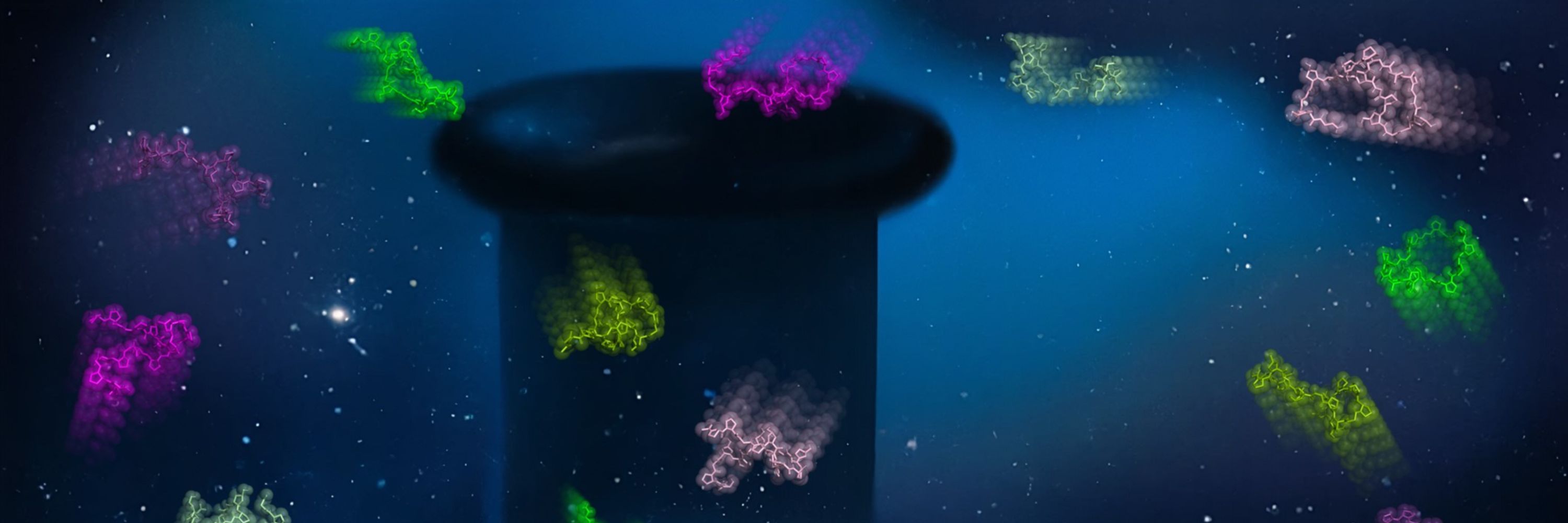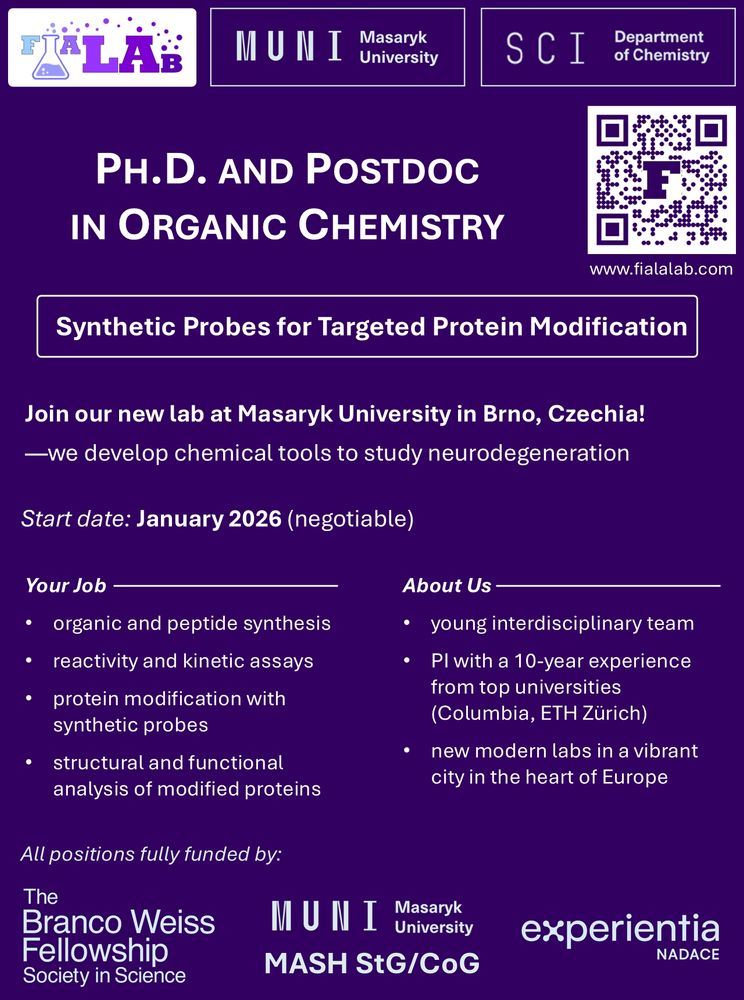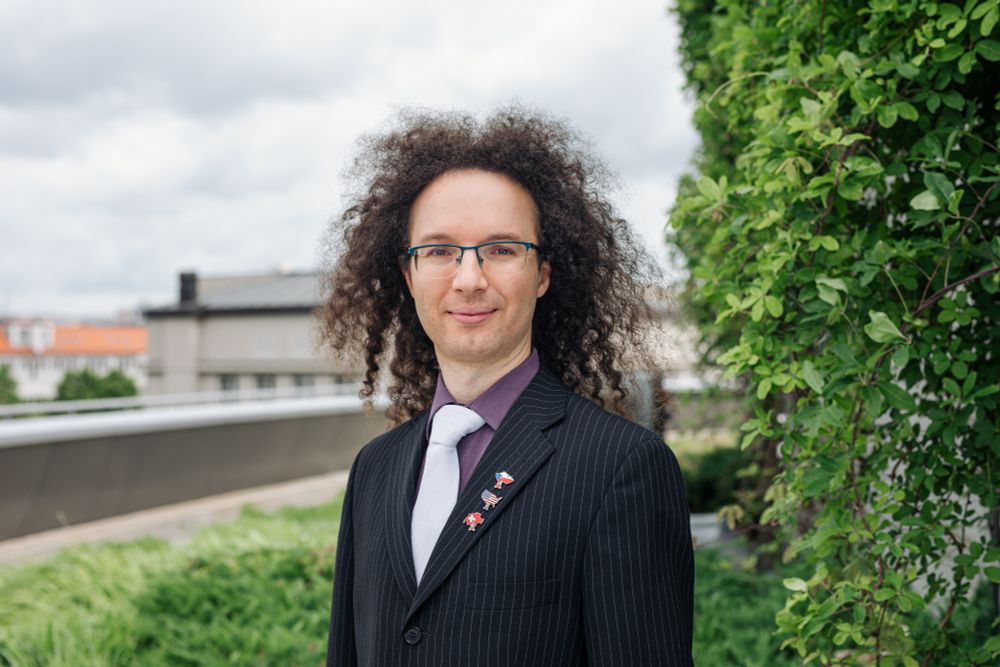Tom Fiala
@tomfialab.bsky.social
100 followers
120 following
25 posts
Senior Scientist and Branco Weiss Fellow at @ethzurich.bsky.social
Incoming Assistant Professor at Masaryk University, Brno, Czechia
Alumnus of @columbiauniversity.bsky.social, NY
Chemical Biology and Supramolecular Chemistry
Posts
Media
Videos
Starter Packs
Pinned
Reposted by Tom Fiala
Tom Fiala
@tomfialab.bsky.social
· Sep 4

The ERC awards €761m to the next generation of scientists in Europe
The European Research Council (ERC) has selected 478 early-career researchers across Europe to receive this year’s Starting Grants. With a total funding of €761 million, these grants support excellent...
erc.europa.eu
Tom Fiala
@tomfialab.bsky.social
· Aug 30

Immobilized acyl-transfer molecular reactors enable the solid-phase synthesis of sterically hindered peptides - Nature Chemistry
Current solid-phase peptide synthesis methods struggle to incorporate sterically hindered amino acids. Now researchers have developed a ribosome-mimicking molecular reactor that bypasses two-phase acy...
www.nature.com
Tom Fiala
@tomfialab.bsky.social
· Aug 24

A Functional Assay for Mining Noninhibitory Enzyme Ligands from One Bead One Compound Libraries: Application to E3 Ubiquitin Ligases
Chemical dimerizers are synthetic molecules that bring into proximity two or more proteins that do not normally interact with one another. A major application of this technology is to recruit an enzym...
pubs.acs.org
Tom Fiala
@tomfialab.bsky.social
· Aug 16

London Dispersion as a Design Element in Molecular Catalysis
This Perspective describes the role of London dispersion (LD) interactions as a key factor controlling chemical selectivity. LD arises from the correlated motion of electrons, leading to subtle yet significant stabilization (“steric attraction”), and counterbalances, together with other noncovalent interactions, Pauli exchange repulsion (“steric hindrance”). While chemists have largely relied on the latter to rationalize selectivities in catalyzed reactions, we emphasize here the role LD plays as a key design element in chemical reactions, in particular, for catalyst development.
pubs.acs.org
Tom Fiala
@tomfialab.bsky.social
· Jul 13
Bambusuril as Effective Astatide Sequestrator Agent by Hydrogen Bonding
Herein, we report a molecular-cage allowing strong chelation of the 211At radioanion. Propargylated bambus[6]uril shows good affinity towards iodide and astatide radiohalides, affording promising incl...
pubs.rsc.org
Tom Fiala
@tomfialab.bsky.social
· Jun 29

Introduction of Reactive Thiol Handles into Tyrosine-Tagged Proteins through Enzymatic Oxidative Coupling
Site-specific protein bioconjugation methods have enabled the development of new therapeutics and materials, and further development of existing techniques has expanded the compatible library of prote...
pubs.acs.org
Reposted by Tom Fiala
Tom Fiala
@tomfialab.bsky.social
· Jun 22

Visualization and Quantification of Base-Level SO2 in Live Cells without Intracellular Background Interference Using Sensitive 19F-NMR
Sulfur dioxide (SO2), as an endogenous gasotransmitter, is involved in a variety of physiological processes in living systems, however, distinction and quantification of base-level SO2 in live cells p...
pubs.acs.org
Tom Fiala
@tomfialab.bsky.social
· Apr 14

Water and Collagen: A Mystery Yet to Unfold
Collagen is the most abundant protein in the human body and plays an essential role in determining the mechanical properties of the tissues. Both as a monomeric protein and in fibrous assemblies, coll...
pubs.acs.org
Tom Fiala
@tomfialab.bsky.social
· Mar 30

Hyperstable and Fibril-Forming Collagen-Mimetic Peptides in Shortest Triple Helices: Empowering the Capping by π-systems
Developing collagen-mimetic peptides (CMPs) with short triple helices and fibril-forming ability remains challenging. Herein, we stabilized short CMPs (3–6 GPO repeats) by attaching extended aromatic π-system─fluorenyl groups at the N-terminus and tyrosine at the C-terminus. These modifications promoted triple helix folding through π–π interactions, acting as a “glue” to stabilize the structure and facilitate fibrillation. A single fluorenyl cap required 5 GPO repeats for helix formation, while double fluorenyl capping reduced this to 4 repeats. Notably, at pH 5.5, triple helices formed with only 3 GPO repeats. The double-capped CMPs exhibited hyperstability (Tm = 76 °C) and formed fibrillar networks at physiological pH. Biophysical and computational studies confirmed the role of π–π and CH–π interactions, along with hydrogen bonding, in stabilization. The minimalistic CMPs supported cell viability, demonstrating their potential for biomedical applications. This strategy offers a method to design highly stable, short CMPs that form robust fibrillar networks.
pubs.acs.org
Tom Fiala
@tomfialab.bsky.social
· Mar 16

Conditional Activation of Protein Therapeutics by Templated Removal of Peptide Nucleic Acid Masking Groups
Interleukin-2 (IL-2)-based therapeutics are emerging as treatments for immunotherapy; however, systemic activation of immune cells hampers their success. Chemically controlling the activity of potent...
onlinelibrary.wiley.com
Tom Fiala
@tomfialab.bsky.social
· Feb 23

Glucose-derived receptors for photo-controlled binding of amino acid esters in water - Communications Chemistry
Selective amino acid receptors that operate in aqueous media are of interest for potential diagnostic and sensing applications. Here, the authors report glucose-derived photoswitchable receptors based...
www.nature.com
Tom Fiala
@tomfialab.bsky.social
· Feb 13

Seeing the Spikes: The Future of Targetable Synthetic Voltage Sensors
Measuring the transduction of electrical signals within neurons is a key capability in neuroscience. Fluorescent voltage sensitive dyes (VSDs) were early tools that complemented classical electrophysiology by enabling the optical recording of membrane potential changes from many cells simultaneously. Recent advances in the VSD field have led to bright and highly sensitive sensors that can be targeted to the desired cell populations in live brain tissue. Despite this progress, recently, protein-based genetically encoded voltage indicators (GEVIs) have become the go-to tools for targeted voltage imaging in complex environments. In this Perspective, we summarize progress in developing targetable VSDs, discuss areas where these synthetic sensors are or could become relevant, and outline hurdles that need to be overcome to promote the routine use of targetable VSDs in neuroscience research.
pubs.acs.org
Tom Fiala
@tomfialab.bsky.social
· Feb 9

Proline cis/trans Conformational Selection Controls 14–3–3 Binding
Intrinsically disordered protein regions (IDRs) are structurally dynamic yet functional, often interacting with other proteins through short linear motifs (SLiMs). Proline residues in IDRs introduce c...
pubs.acs.org
Tom Fiala
@tomfialab.bsky.social
· Feb 2

Triazination/IEDDA Cascade Modular Strategy Installing Pyridines/Pyrimidines onto Tyrosine Enables Peptide Screening and Optimization
Modular chemical postmodification of peptides is a promising strategy that supports the optimization and innovation of hit peptide therapeutics by enabling rapid derivatization. However, current metho...
pubs.acs.org
Tom Fiala
@tomfialab.bsky.social
· Jan 17

A Protein Cleavage Platform Based on Selective Formylation at Cysteine Residues
Site-selective cleavage of the peptide backbone in proteins is an important class of post-translational modification (PTM) in nature. However, the organic chemistry for such site-selective peptide bond cleavages has yet to be fully explored. Herein, we report cysteine S-formylation as a means of selective protein backbone cleavage. We developed N-formyl sulfonylanilide as a cysteine-selective formylation reagent for peptides and proteins. Upon S-formylation with the reagent, the amide bond adjacent to the S-formylated cysteine is cleaved by hydrolysis under neutral aqueous conditions. Formylation probes bearing a protein ligand enabled the affinity-based selective cleavage of the target proteins not only in the test tube but also under biorelevant conditions such as in crude cell lysate and on the cell surface. These results demonstrate the high biocompatibility of this protein cleavage technology. A proof-of-concept study of cleavage-induced protein activation further demonstrates its utility as a platform for the functional regulation of proteins by artificial PTM.
pubs.acs.org








